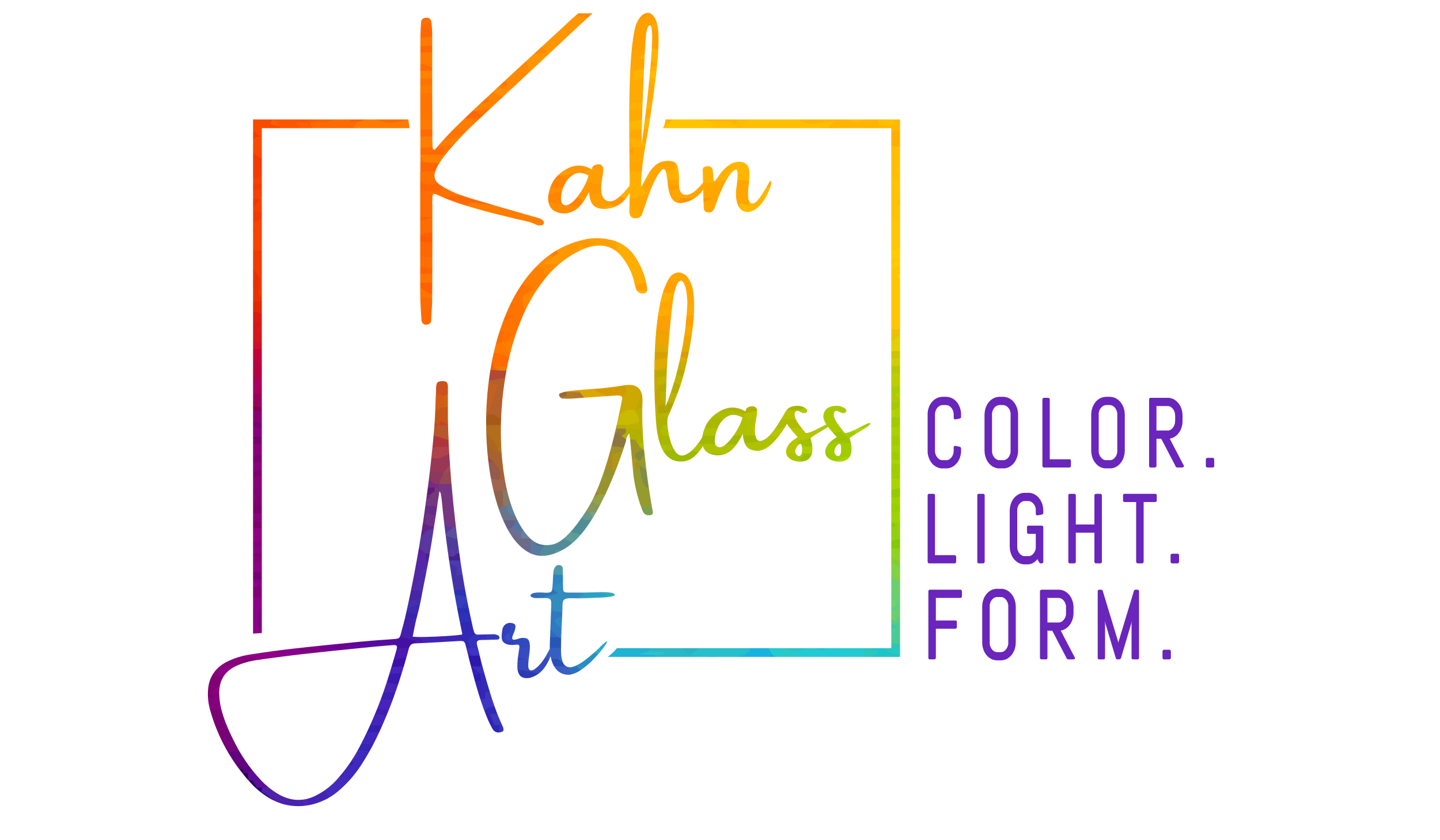The Process
Kiln-Formed Glass
“Kilnforming is the process of shaping glass in a kiln with heat and gravity with temperatures ranging up to 1800 degrees.
When glass is heated in kiln, it becomes soft and the consistency becomes sticky and almost honey-like. As the temperature continues to increase, the glass becomes more liquid. Gravity takes hold of the molten glass, the molten glass fills the space in which it’s contained, and fuses with any other pieces of compatible glass.
When the temperature inside the kiln is returned to room temperature (after an appropriate anneal soak phase – to prevent the glass from cracking during the cooling phase), the glass will resume its crystalline structure in the shape it assumed at process temperature.”
(What is kilnforming? Retrieved from https://www.bullseyeglass.com/what-is-kilnforming.html)
Methods & Techniques
There are many methods and techniques that are related to kilnforming, including kilncasting, printmaking, Pate de Verre, glass fusing and glass slumping.
While I have taken several classes and studied each of these methods, my favorite technique is glass fusing. Glass fusing is the technique of joining two or more pieces of glass by heat in the kiln. Glass fuses around 1450-1500 degrees Fahrenheit. When I create a design or plan a kilnformed project I have to take several things into consideration during every step of the process. First and foremost is the compatibility of the glass. If all the glass used in a project doesn’t have the same COE (coefficient of expansion), the end result will be cracked glass. I personally only use glass from Bullseye Glass because they have a wonderful pallet of colors to choose from, their glasses designed for fusing all have the same COE, and Bullseye inspects and tests every sheet of glass for compatibility.
Different glasses are composed of different minerals and what makes this so exciting to me is the chemical reactions between some glasses. When certain Bullseye glasses are combined in the kiln, their chemistries may react with each other to produce special effects. The reactions will take place at the interface (where the glasses are touching), and thus may be considered a design feature. One of my favorite reactions takes place between Bullseye’s French Vanilla Glass (sulphur/selenium bearing) and Dense White Glass (lead bearing) Glass. As you can see in the picture to the left, a fabulous grey is produced.
At the same time I have to be aware of reactions that might end up looking like mud – oh dear!
Another very important consideration is the thickness of the glass which effects the rate of cooling and heating. Then after the piece or pieces are done in the kiln I have to decide how I wish to finish the piece. These additional steps may include cold-working, sandblasting and slumping or a combination of processes.
Coldworking
Coldworking, as it sounds, is changing the shape or surface texture of glass using tools and processes that do not rely on heat. Coldworking methods include grinding, carving, engraving, polishing, sandblasting, and other techniques. There are many tools in my arsenal, including grinders, a wet-tile saw, and a wet-belt sander. The wet-tile saw cuts up thick slabs of glass that I then incorporate with other pieces of glass. My wet-belt sander is used to smooth and bevel the edges of my glass pieces.
Kilnformed glass is used for everything from jewelry to large scale sculpture. I find it so exciting to have endless possibilities to design with glass.
Addresses
Palm Springs Studio:
2401 S. Caliente Drive
Palm Springs, CA 92264
Lake Tahoe Studio:
2942 Promontory Loop
Genoa, NV 89411
Call Me
Palm Springs Studio (winter)
(760) 324-2940
Lake Tahoe Studio (summer)
(775) 392-0907
Cell: (541) 326-6950
Email Me







